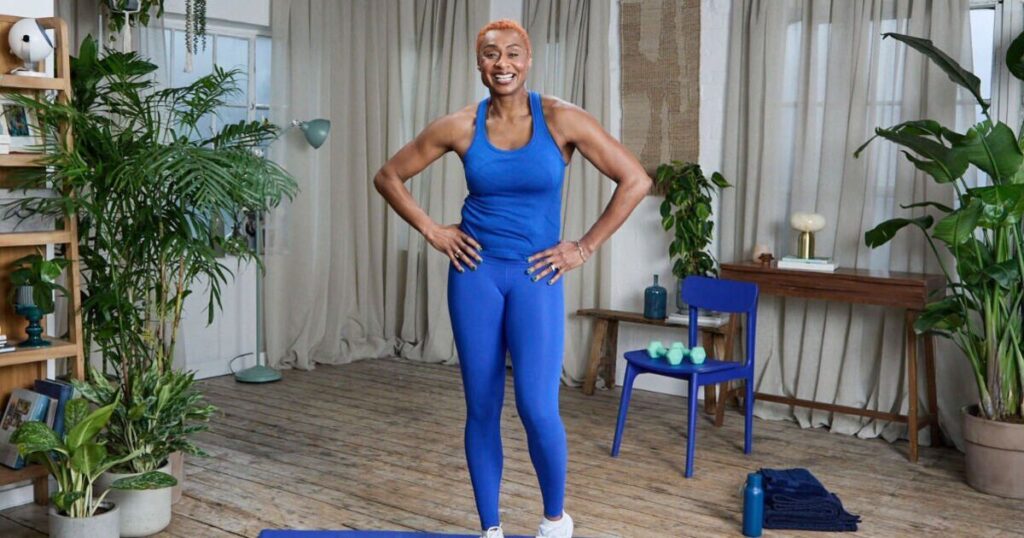
An Olympic athlete has shared her top tips to beat three types of pain, after a survey found almost a third of over 45s avoid exercise due to aches and pains. The research by Boots also revealed that one in ten people said aches and pains were their top reasons for not exercising at all, and one in five were walking for less than 10 minutes a day.
Triple jumper and fitness expert Michelle Griffith Robinson represented Great Britain at the 1996 Summer Olympics. She has joined forces with Boots to create a series of videos explaining how to strengthen joints and enjoy gentle movement. Here’s her advice on how to deal with three types of pain:
Back pain
There is usually no need to avoid exercise entirely if you are experiencing back pain, Ms Griffith Robinson advised. She said: “A great place to start is by slowly easing yourself into walking.
“You should start at a slow and steady pace for at least 10-minutes a day and when you feel more comfortable you can try going further or walking at a faster face.”
Knee pain
“Simple exercises can prepare your body for gentle physical activity, boost performance and help to prevent injury,” Ms Griffith Robinson said.
“If you’re experiencing knee pain, it’s important to warm up and cool down as this can help get movement and strength back.
“My favourite stretches for both pre and post exercise are three sets of five rep lunges on each leg and three sets of 10 body weighted squats.”
Hip pain
Anyone experiencing hip pain may want to consider redoing the speed of their movement and increasing rest time, the athlete said. She explained: “This allows you to stay active but reduces the intensity of the actual exercise.
“So, if you’re walking, I would recommend taking breaks in 1-minute intervals as this will allow your body to recuperate and your muscles to get used to moving.”
What other pain relief could help?
Boots superintendent pharmacist Claire Nevinson said it was important to keep getting some gentle exercise when possible.
“Aches and pains can really get you down and sometimes make you avoid movement all together,” she said. “But it is so important to try to keep moving — something as easy as walking can often ease discomfort.”
Over-the-counter medicines could be considered for short-term pain relief, Ms Nevinson added.
She explained: “Paracetamol is usually suitable for non-nerve pain like headaches and non-steroidal anti-inflammatory medicines like ibuprofen can work better on inflammatory pain like strains and sprains. If you’re ever unsure, your local pharmacist can advise.”
Joint supports can provide stability and reducing the pressure and swelling around injured areas such as knees, wrists and ankles, the pharmacist said.
And hot and cold therapy can help soothe sore muscles and increase blood flow in an injury, reducing swelling and pain. Boots offers an online pain relief selector tool which can help identify suitable products.
Ms Nevinson added: “Of course, if your pain is so bad that any movement is causing you severe discomfort, you should speak to your GP or local health clinic as soon as possible.”




















